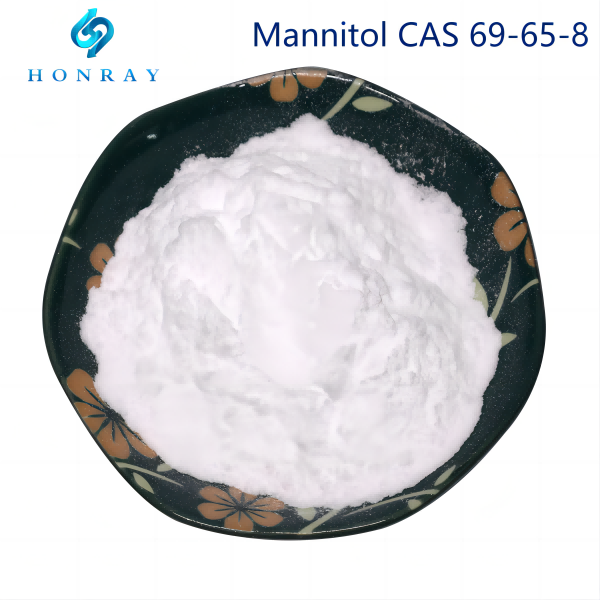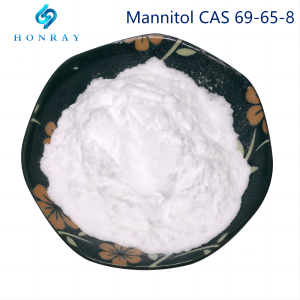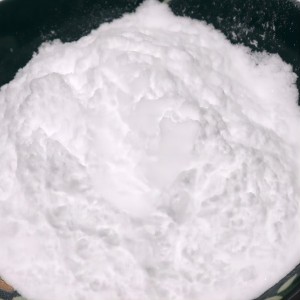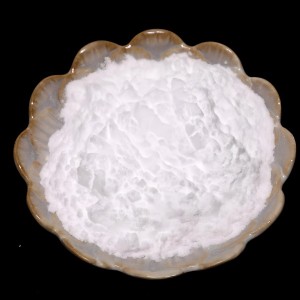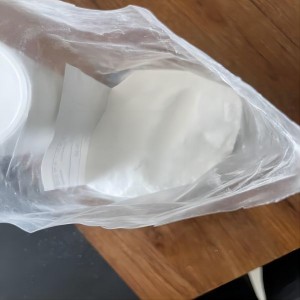Mannitol CAS 87-78-5 for Food Grade
USAGE:
Mannitol is a polyol or sugar alcohol, its natural products widely exist in plants, algae, edible fungi and lichens and other organisms. Mannitol is widely used in food, medicine and chemical industry because of its special physical and chemical properties.
Mannitol, also known as mannitol, molecular formula C6H14O6, relative molecular weight 182.17, colorless to white needle or oblique column crystal or crystalline powder. Odorless, with cool and sweet taste. The sweetness is about 57%~72% of sucrose. It produces 8.37 joules of heat per gram, about half that of glucose. Hygroscopicity is small, stable after aqueous solution. Stable to dilute acid, dilute base. It is not oxidized by oxygen in the air. Soluble in water (5.6g/100mL,20ºC) and glycerin (5.5g/100mL), slightly soluble in ethanol (1.2g/100mL), almost insoluble in most other commonly used organic solvents.
Mannitol is a 6-carbon sugar alcohol, which can be made from fructose through catalytic hydrogenation. It has low hygroscopicity, and is often used as a dusting agent in gum candy manufacturing to avoid bonding with manufacturing equipment and packaging machinery. It is also used as a plasticizing system component to maintain its soft properties. It can also be used as a thinner or filler for sugar tablets and as a chocolate-flavored coating for ice cream and candy. Has a pleasant flavor, does not fade at high temperature, chemical properties are not lively. Its pleasant flavor and texture mask vitamin, mineral and herb scents. It is a good low calorie sweetener, gumdrop and candy anti-stick agent, nutritional supplement and tissue modifier, moisturizing agent.
Specifications
|
Mannitol Standard |
||||||
| ITEM | CP2015 | BP2014 | EP8.0 | USP39 | ||
|
Appearance |
white, crystalline powder or free-flowing granules |
|||||
|
Solubility |
Freely soluble in water, very slightly soluble in ethanlo, insolutle in enther |
_________ |
||||
|
Identification;Melting point |
166-170℃ |
165-170℃ |
165-170℃ |
|||
|
Specific Optical Rotation |
+137 ~+145° |
+23 ~+25° |
+137 ~+145° |
|||
|
Identification:FeCl3 |
Positive |
____________ ____________ |
||||
|
Identification: Infrared absorption spectrophotometry |
Conformity |
|||||
|
Identification:TLC |
__________ | Conformity | ||||
|
Acidity |
Conformity |
_________________ | Conformity | |||
|
Appearance of solution |
Clear and colourless |
Clear and colourless |
||||
|
Salmonella |
≤2.0% |
Confomity | Confomity | |||
|
Reducing sugarsi |
≥12.8ml | ≤0.1% | ≤0.1% | |||
|
Chloride |
≤0.003% | ____________ | _____________ | |||
|
Sulphate |
≤0.001% | ____________ | _____________ | |||
|
Oxalate |
≤0.02% | _____________ | _____________ | |||
|
Loss on drying |
≤0.05% | ≤0.05% | ≤0.05% | |||
|
Residue on lgnition |
≤0.1% | ____________ | ||||
|
5PPM metals |
≤10ppm | ≤1ppm | ||||
|
Arsenic |
≤2ppm | ____________ | _____________ | |||
|
Conductivity |
_______ | ≤20us/cm | ≤20us/cm | |||
|
Nickel |
_______ | ≤1ppm | ≤1ug/g | |||
|
Assay |
98.0-102.0% | 97.0-102.0% | 97.0-102.0% | |||
|
Bacterial endotoxins |
________ | ≤2.5EU/g | ≤2.5EU/g | |||
|
The total vlable aerobic count |
________ | ≤100cfu/g | ≤100cfu/g | |||
|
Molds and yeasts |
________ | ≤100cfu/g | ≤100cfu/g | |||
|
Escherichia coli |
________ | Negative/g | Negative/g | |||
|
Salmonella |
_________ | Negatiov/10g | Negatiov/10g | |||









